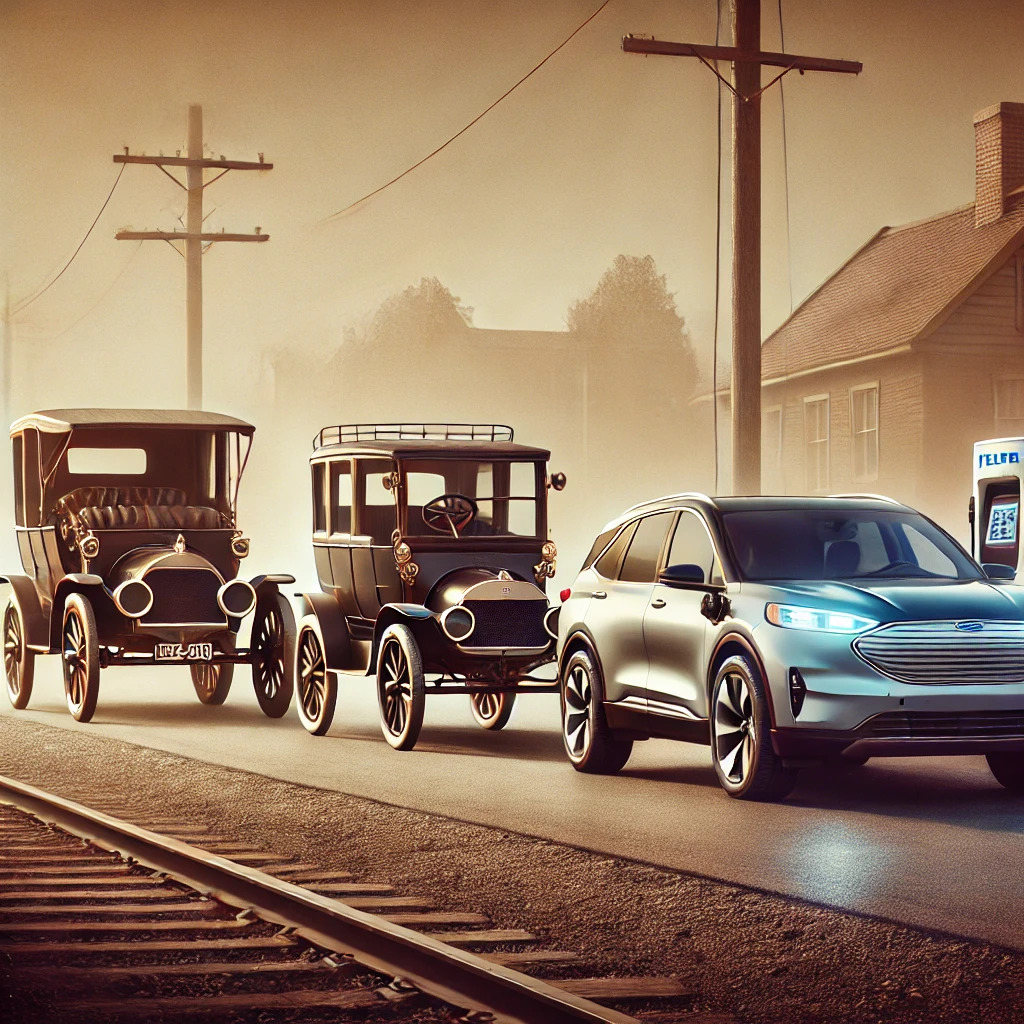Family cars have come a long way since the early days of motoring, evolving from basic, functional vehicles to sophisticated, tech-laden machines designed to cater to the diverse needs of modern families. The journey of these vehicles reflects broader shifts in automotive technology, consumer preferences, and societal changes.
The Past: Laying the Foundations
The concept of a “family car” began taking shape in the early 20th century, when vehicles like the Ford Model T revolutionised personal transportation. Introduced in 1908, the Model T made cars affordable for the average family, marking the beginning of widespread car ownership. Early family cars were built for practicality, offering durability and enough space to accommodate a growing family, but lacked many of the safety and comfort features we take for granted today).
As car ownership expanded, manufacturers began to introduce vehicles specifically designed for families. The post-war era saw the rise of the station wagon, a staple of suburban life in the 1950s and 60s. These vehicles offered ample cargo space, making them ideal for family road trips and everyday errands. However, these early family cars were still relatively basic, with minimal focus on safety or comfort.
The Present: Technology and Comfort in Harmony
Today’s family cars are a far cry from the utilitarian models of the past. The modern family vehicle is a sophisticated blend of technology, comfort, and safety, designed to meet the demands of 21st-century life.
Safety Innovations: One of the most significant advancements in family cars has been the development of safety technologies. Features like adaptive cruise control, blind-spot monitoring, and automatic emergency braking have become standard in many vehicles, offering an extra layer of protection for families on the road. These technologies work seamlessly in the background, reducing the likelihood of accidents and enhancing overall driving safety.
Eco-Friendly Options: Environmental concerns have also reshaped the family car market. The rise of hybrid and electric vehicles (EVs) reflects a shift towards more sustainable transportation. Modern EVs offer the dual benefits of reducing carbon footprints while providing economic advantages through lower running costs. Governments around the world are encouraging this shift by offering tax incentives and expanding charging infrastructure, making it easier for families to transition to greener vehicles.
Connectivity and Infotainment: With families spending more time on the road, connectivity has become a crucial feature. Today’s family cars are equipped with advanced infotainment systems that keep everyone entertained and connected. These systems integrate with smartphones, offer real-time navigation, and even allow for remote control of certain car functions, making journeys more enjoyable and less stressful.
Space and Comfort: Modern family cars also prioritise space and comfort. Innovative seating arrangements, ample legroom, and a focus on ergonomic design make long drives more comfortable. Features like climate control, heated seats, and noise-cancelling cabins transform the driving experience from a mundane necessity into a pleasure.
The Future: A Glimpse Ahead
The future of family cars promises even more exciting developments, driven by rapid advancements in technology and changing consumer expectations.
Autonomous Driving: One of the most anticipated innovations is autonomous driving. Self-driving cars have the potential to revolutionise family travel by making journeys safer and more efficient. Although fully autonomous vehicles are still in the testing phase, incremental advances like self-parking and highway autopilot systems are already making their way into modern cars.
Electric Revolution: The shift towards electric vehicles is set to continue, with EVs becoming more mainstream. Advances in battery technology are making electric cars more affordable and practical, with longer ranges and faster charging times. The future could see a majority of family cars being electric, driven by both consumer demand and regulatory pressures.
Sustainability and Design: Future family cars will likely feature more sustainable materials and environmentally friendly manufacturing processes. Car design is also expected to evolve, with a focus on aerodynamics and efficiency, resulting in vehicles that are not only greener but also more visually appealing.
Enhanced Connectivity: The trend towards connected cars will deepen, with vehicles becoming even more integrated into our digital lives. We can expect cars that are fully connected to smart home systems, allowing for seamless interaction between the car and home, and offering advanced features like predictive maintenance and personalised driving experiences.
Conclusion
The evolution of family cars reflects broader technological and societal changes, from the utilitarian models of the past to the high-tech, eco-friendly vehicles of today and tomorrow. As we look to the future, it’s clear that family cars will continue to adapt and innovate, meeting the ever-changing needs of families and making the journey as important as the destination. Whether through advanced safety features, sustainable design, or cutting-edge connectivity, the family car will remain a central part of our lives, evolving alongside us every step of the way.

